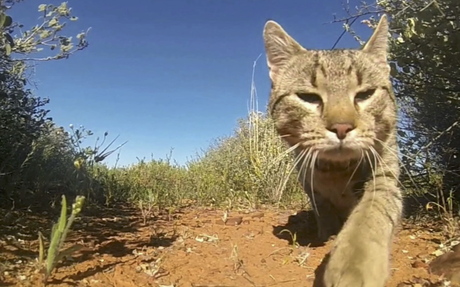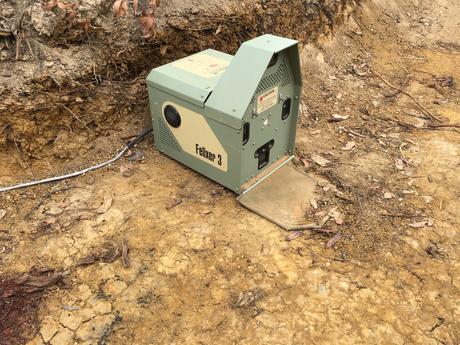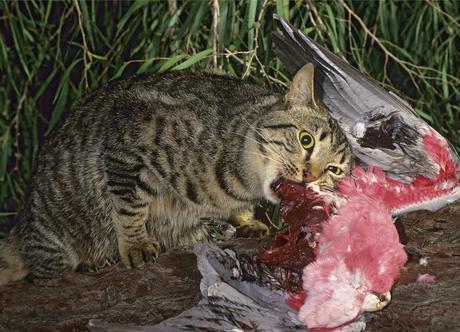I’m pleased to announce the publication of a paper led by Kathryn Venning (KV) that was derived from her Honours work in the lab. Although she’s well into her PhD on an entirely different topic, I’m overjoyed that she persevered and saw this work to publication.
 Here, killa, killa, killa, killa …
Here, killa, killa, killa, killa …As you probably already know, feral cats are a huge problem in Australia. The are probably the primary reason Australia leads the world in mammal extinctions in particular, and largely the reason so many re-introduction attempts of threatened marsupials fail miserably only after a few years.
Feral cats occupy every habitat in the country, from the high tropics to the deserts, and from the mountains to the sea. They adapt to the cold just as easily as they adapt to the extreme heat, and they can eat just about anything that moves, from invertebrates to the carcases of much larger animals that they scavenge.
Cats are Australia’s bane, but you can’t help but be at least a little impressed with their resilience.
Still, we have to try our best to get rid of them where we can, or at least reduce their densities to the point where their ecological damage is limited.
Typically, the only efficient and cost-effective way to do that is via lethal control, but by using various means. These can include direct shooting, trapping, aerial poison-baiting, and a new ‘smart’ method of targeted poison delivery via a prototype device known as a Felixer™️. The latter are particularly useful for passive control in areas where ground-shooting access is difficult.

A few years back the federal government committed what might seem like a sizeable amount of money to ‘eradicate’ cats from Australia. Yeah, good luck with that, although the money has been allocated to several places where cat reduction and perhaps even eradication is feasible. Namely, on islands.
There are precedents. For example, land managers of the 62,000-ha Dirk Hartog Island of Shark Bay in Western Australia have recently completed possibly the largest successful eradication of cats anywhere in the world, and little (5800 ha) Faure Island (also in Shark Bay) was the site of a successful eradication more than a decade ago.
South Australians don’t like to be one-upped by their neighbours to the west, so with the help of the federal cash-splash, a programme to eradicate cats on the much bigger (440,000 ha) Kangaroo Island was identified as another candidate for cat control several years ago.
We started chatting to the authorities about how a model might help indicate relative costs of different lethal roll-out strategies, and what kind of proportional kill rates would be required to eradicate cats within a 10-year time frame. For various reasons I won’t get into now, much of the data we requested were either not available or held in confidence, so we made the collective decision to proceed with modelling putative cat-eradication strategies combined with cost estimates derived from programmes elsewhere for Kangaroo Island.

It wasn’t easy, but after developing an ecologically realistic demographic model with density feedback, full stochastic resampling (including for costs), and several temporal (and spatially proxied) scenarios, we have now published the full details in Conservation Science and Practice.
The paper — Predicting targets and costs for feral-cat reduction on large islands using stochastic population models — estimates that a two-phase culling including a higher cull rate in the first two years (≥ 0.60 proportion of population) followed by a minimum ‘maintenance’ cull of at least 0.50 would bring the population to near zero in 10 years.
Likewise, we found that the most cost-efficient combination of shooting, baiting, trapping, and Felixer roll-out would be in the range of AU$17 to AU$21 million to achieve. Spatially recycled rollouts of the some of the equipment could reduce costs further.
In the end, what matters the most here is the relative costs of the scenarios we tested, plus the approximate proportional targets required for success. But more data are always welcome, and we intend to produce more spatially explicit variants of the model with updated demographic and cost parameters down the track.
We sincerely hope the programme will be successful and that Kangaroo Island can be declared cat-free in the near future.

